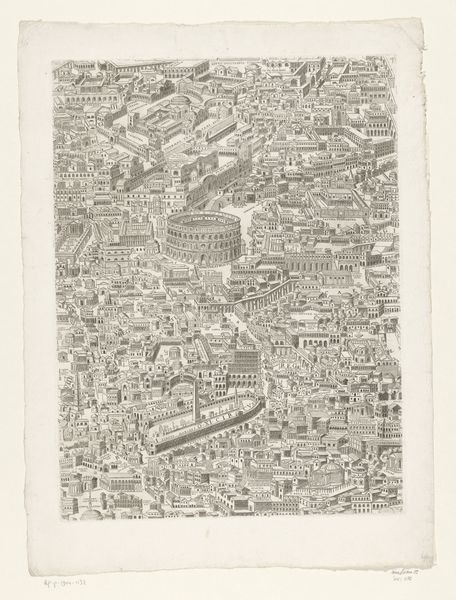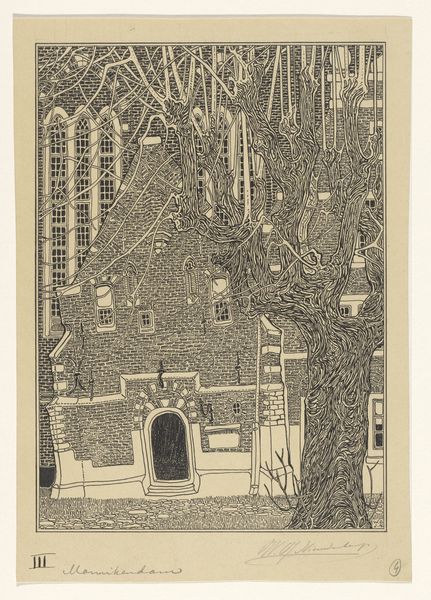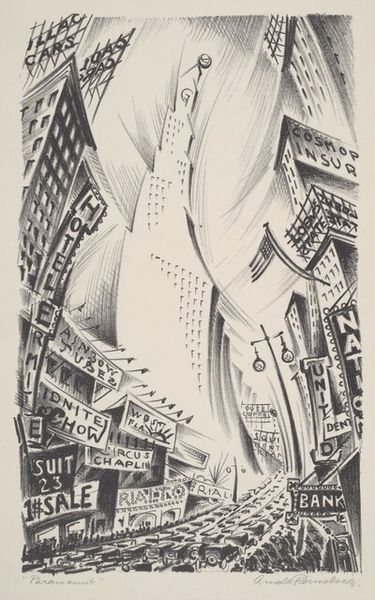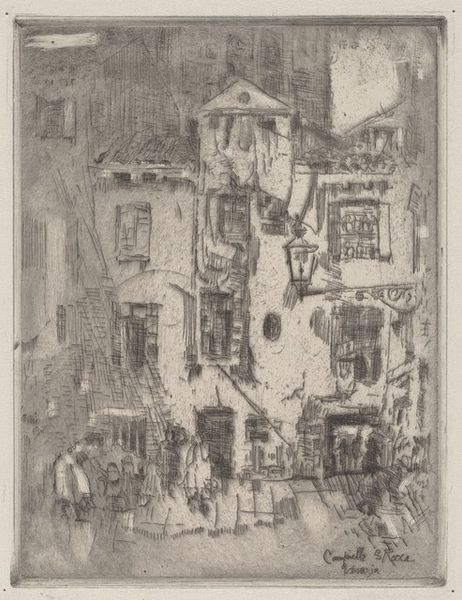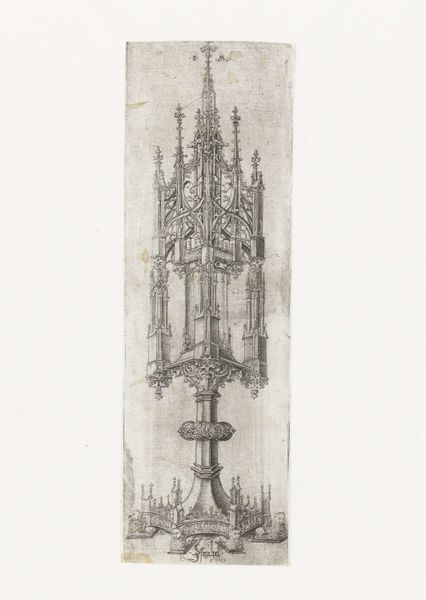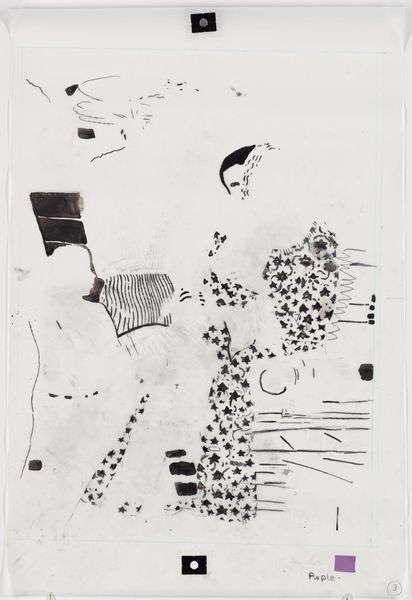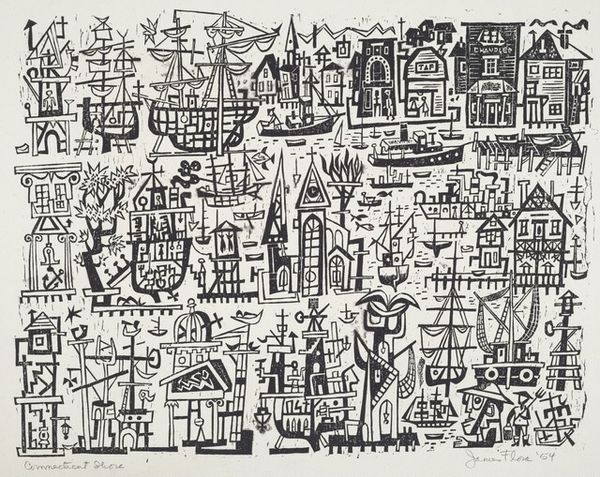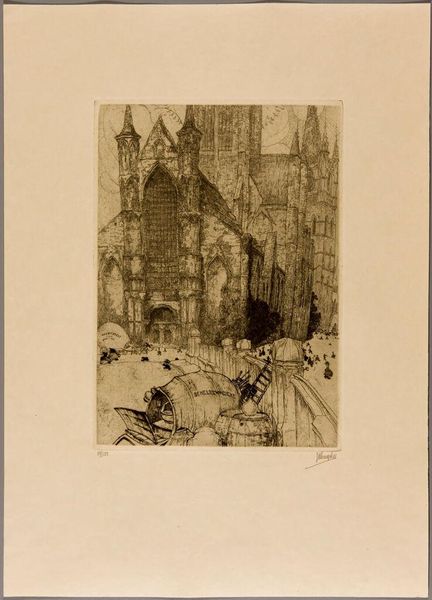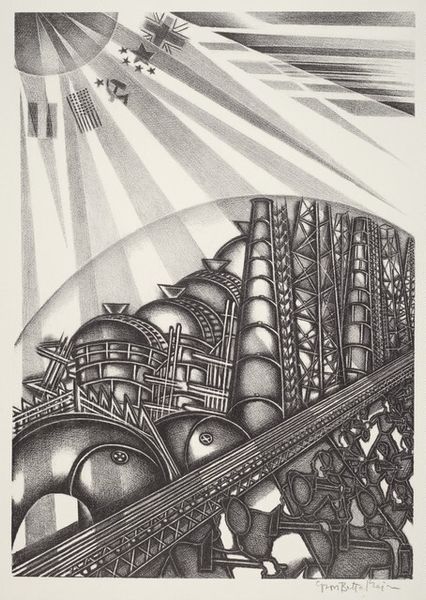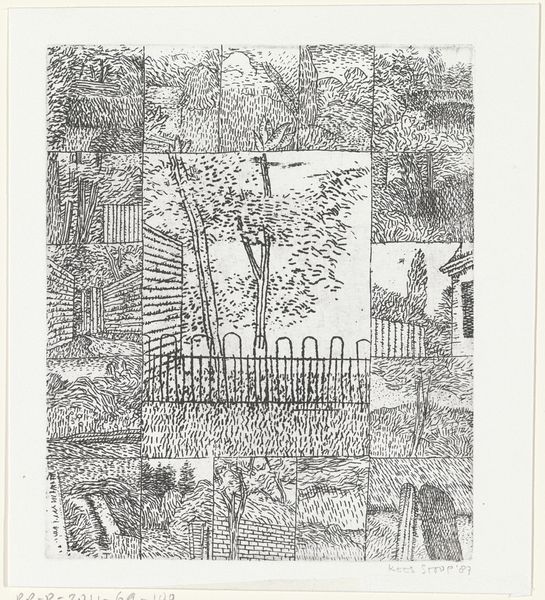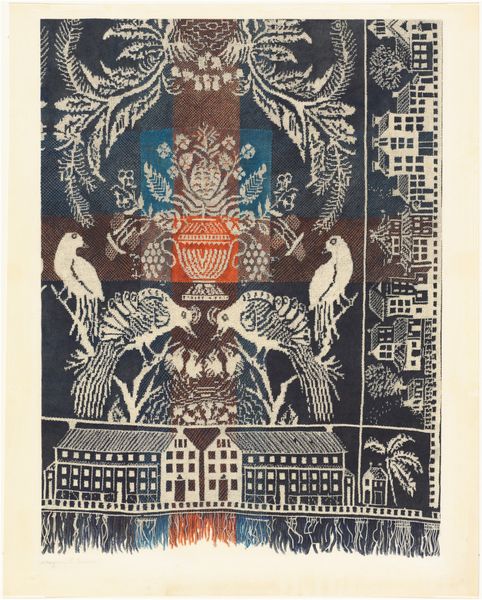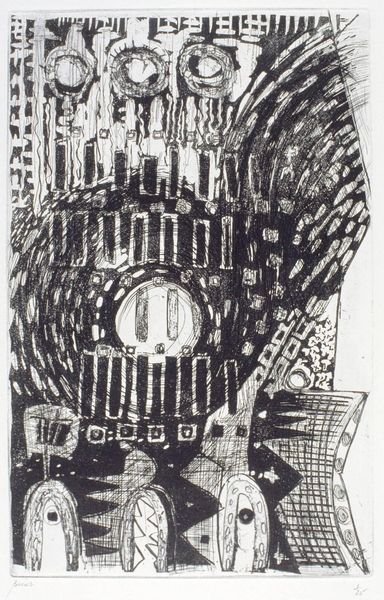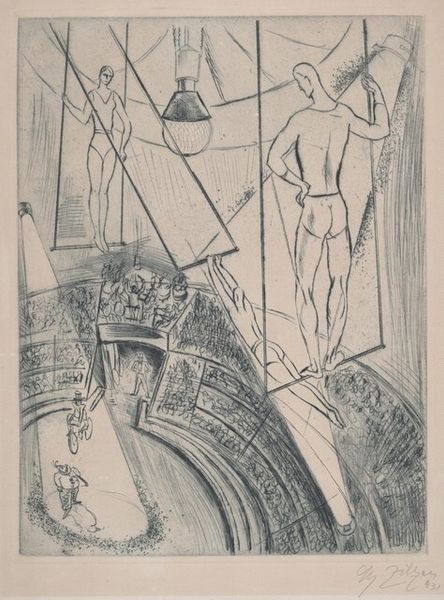
drawing, print, ink
#
architectural sketch
#
drawing
#
comic strip sketch
#
quirky sketch
# print
#
figuration
#
personal sketchbook
#
ink
#
idea generation sketch
#
sketchwork
#
geometric
#
pen-ink sketch
#
line
#
sketchbook drawing
#
storyboard and sketchbook work
#
initial sketch
Copyright: National Gallery of Art: CC0 1.0
Editor: This is "The Thirty Stage Rocket," a drawing and print by Harry L. Hurwitz. The dense, detailed linework creates a slightly unsettling feeling, like a fever dream of technology. What’s your take on it? Curator: The density and layering speaks volumes. Note how the architectural precision of the rocket contrasts sharply with the organic, almost biological forms woven throughout the background. I see this as a commentary on the promises and potential pitfalls of technological advancement. Hurwitz places the idealized "Vitruvian Man" in this scene, forcing a consideration of humanity’s role within progress, but there’s a dissonance, wouldn't you agree? Editor: Yes, definitely dissonant! The Vitruvian Man looks trapped, almost like a specimen. Is Hurwitz questioning whether technology truly serves humanity or if it commodifies it instead? Curator: Precisely! Think about the socio-political context it was made in, or could be, considering there is no established date. Could it speak to the anxieties surrounding the Cold War space race, perhaps? Or anxieties around a capitalist machine with people as cogs. What’s lost as we aim for progress? What perspectives get sidelined in this pursuit? Editor: That makes the "thirty stages" sound less like progress and more like… a Sisyphean task. A never-ending cycle. Curator: It makes you question who benefits from these relentless advancements and who is left behind. Perhaps it is about progress that always needs more, thirty stages or a thousand? Editor: This has given me so much to consider about the cost of progress and whose voices are amplified or suppressed. Thanks! Curator: A work like this is important because it fosters critical dialogue, helping us challenge dominant narratives and advocate for more equitable and sustainable futures.
Comments
No comments
Be the first to comment and join the conversation on the ultimate creative platform.
